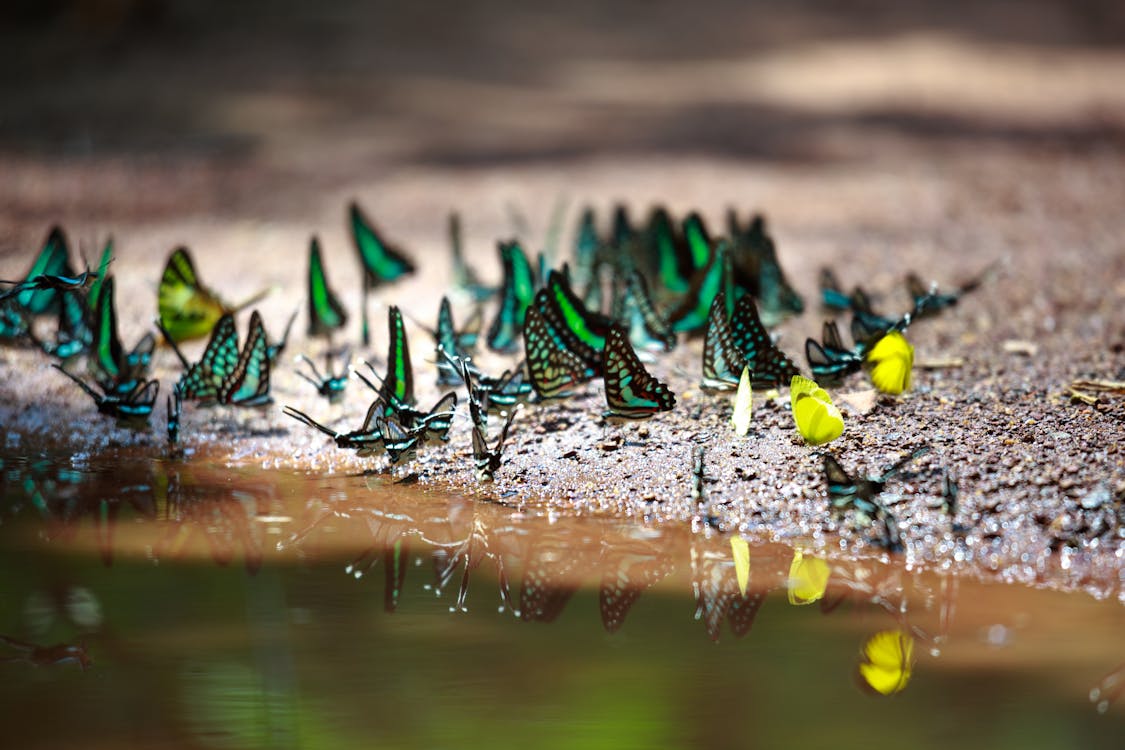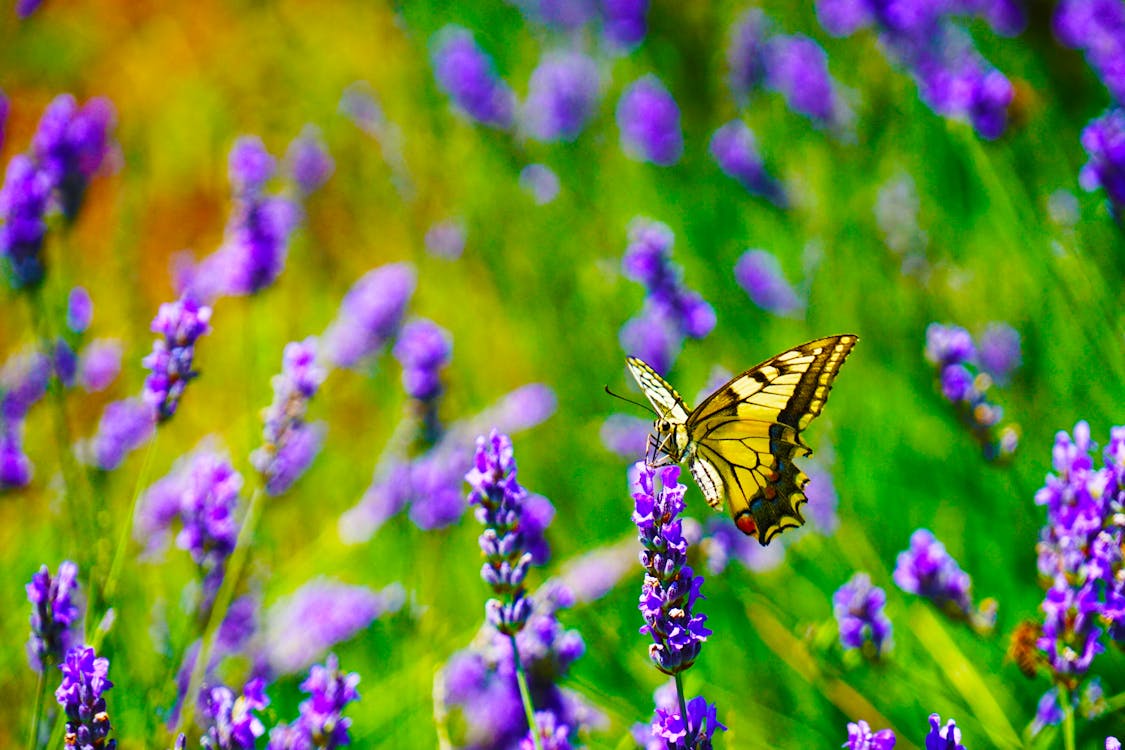Transforming your garden into a vibrant ecosystem that welcomes butterflies and other pollinators is not only a beautiful endeavor but also a crucial one for the health of our environment. At Thuja Gardens, we understand the importance of creating spaces that support biodiversity. We're passionate about offering a wide range of plants and resources to help you achieve your butterfly-friendly garden dreams.
Whether you're a seasoned gardener or just starting, join us to discover the plants and practices that will attract pollinators to your outdoor sanctuary.
Browse our selection of butterfly-friendly plants and resources at Thuja Gardens for inspiration and supplies!
As gardeners, we have the power to play a vital role in supporting pollinators like butterflies, bees, and hummingbirds. By carefully selecting plants that provide food and habitat, we can create a haven that enhances the beauty of our outdoor spaces and contributes to preserving these essential creatures.
Let's delve into some key plants and practices to help you cultivate a butterfly-friendly garden:
1. Choose Native Plants:
- Native plants are adapted to your region's climate and soil conditions, making them well-suited for local pollinators.
- Incorporate species like milkweed, coneflowers, asters, and goldenrod, which are beloved by butterflies for their nectar-rich blooms.
- Opt for Thuja Gardens' selection of native plants, including American pillar arborvitae treesand Virginian arborvitae for sale, to provide a diverse array of food sources for butterflies.
Explore our collection of native plants, including American pillar arborvitae trees and Virginian arborvitae for sale, to add beauty and biodiversity to your garden!
2. Create Diverse Habitats:
- Butterflies require more than just nectar-producing flowers; they also need sheltered spaces for resting and protection.
- Incorporate a variety of plant heights and structures to create layers within your garden, from ground covers to shrubs and trees.
- Consider adding a butterfly house or sheltered area where butterflies can roost during inclement weather or overnight.
Maintaining a butterfly-friendly garden goes beyond plant selection; it also involves adopting practices that support the overall health of your ecosystem. Here are some additional tips to help you cultivate a thriving habitat for butterflies and other pollinators:
3. Water Sources for Butterflies:

Like all creatures, butterflies rely on access to water for various essential functions, including hydration, reproduction, and maintaining their overall health. Providing suitable water sources in your garden can significantly enhance its attractiveness to butterflies.
Here's how you can ensure your garden offers ample hydration options for these delicate insects:
Shallow Puddling Areas:
- Butterflies often gather in shallow puddles to drink water and extract essential minerals like sodium, which are scarce in their typical nectar diet.
- Create shallow depressions in your garden filled with damp sand or mud. These areas should be no more than a few inches deep to accommodate the delicate nature of butterflies.
- Mix in some organic matter or compost with the soil to enrich it and provide additional nutrients for butterflies.
Birdbaths or Shallow Dishes:
- Install a birdbath or place shallow dishes filled with water strategically throughout your garden.
- Ensure the water level is shallow, no deeper than half an inch, to prevent butterflies from drowning.
- Add small pebbles or rocks to the water dish to provide landing spots and prevent butterflies from slipping into the water.
Misting Stations:
- Set up misting stations or gently spray water onto foliage and flowers in your garden to create droplets for butterflies to drink.
- Avoid using high-pressure sprayers, as they may startle or harm the delicate wings of butterflies.
Take the next step towards creating a butterfly-friendly garden by incorporating these practices into your gardening routine. Visit Thuja Gardens for all your organic gardening needs!
Watering Techniques:
- When watering your garden, aim to mimic natural rainfall by using a gentle, dispersed spray rather than a strong stream of water.
- Water plants in the early morning or late afternoon when butterflies are most active to provide them with fresh hydration options.
Maintaining Clean Water Sources:
- Regularly clean and refill birdbaths or water dishes to prevent the buildup of algae and debris that can make water sources unsuitable for butterflies.
- Avoid using chemical additives or treatments in water sources, as these can be harmful to butterflies and other wildlife.
1. Avoiding Chemical Pesticides:
Chemical pesticides pose significant risks to butterflies and other beneficial insects, disrupting the delicate balance of your garden ecosystem. By embracing natural pest control methods and organic gardening practices, you can effectively manage pests while safeguarding the health of pollinators like butterflies.
Here's how you can avoid chemical pesticides and create a safer environment for butterflies:
Companion Planting:
- Planting a diverse range of species in your garden can help naturally repel pests and attract beneficial insects like ladybugs and lacewings, which prey on common garden pests.
- Consider interplanting aromatic herbs like basil, lavender, and mint with your flowering plants to deter pests while providing additional food sources for butterflies.
Hand-Picking Pests:
- Monitor your garden regularly for signs of pest infestations, such as chewed leaves or discolored foliage.
- Hand-pick pests like caterpillars and aphids off plants and dispose of them manually, or relocate them to a different area of your garden.
Encouraging Natural Predators:
- Create habitat and nesting sites in your garden for natural predators like birds, frogs, and predatory insects.
- Avoid using broad-spectrum insecticides that indiscriminately kill both harmful and beneficial insects, disrupting the natural balance of your garden ecosystem.
Organic Gardening Practices:
- Choose organic fertilizers, mulches, and soil amendments to nourish your plants without introducing harmful chemicals into the environment.
- Practice crop rotation and soil health management techniques to prevent pest buildup and maintain a healthy, resilient garden ecosystem.

As shepherds of the land, we have a responsibility to cultivate spaces that support biodiversity and promote the well-being of all living creatures. By creating a butterfly-friendly garden filled with native plants, diverse habitats, and mindful practices, we can make a meaningful difference in the world around us.
At Thuja Gardens, we're here to support you on your journey towards creating a haven for butterflies and other pollinators. Browse our selection of butterfly-friendly plants and resources today and join us in nurturing a greener, more vibrant future for generations to come.
Start your butterfly-friendly garden journey today with Thuja Gardens' selection of plants and resources!

